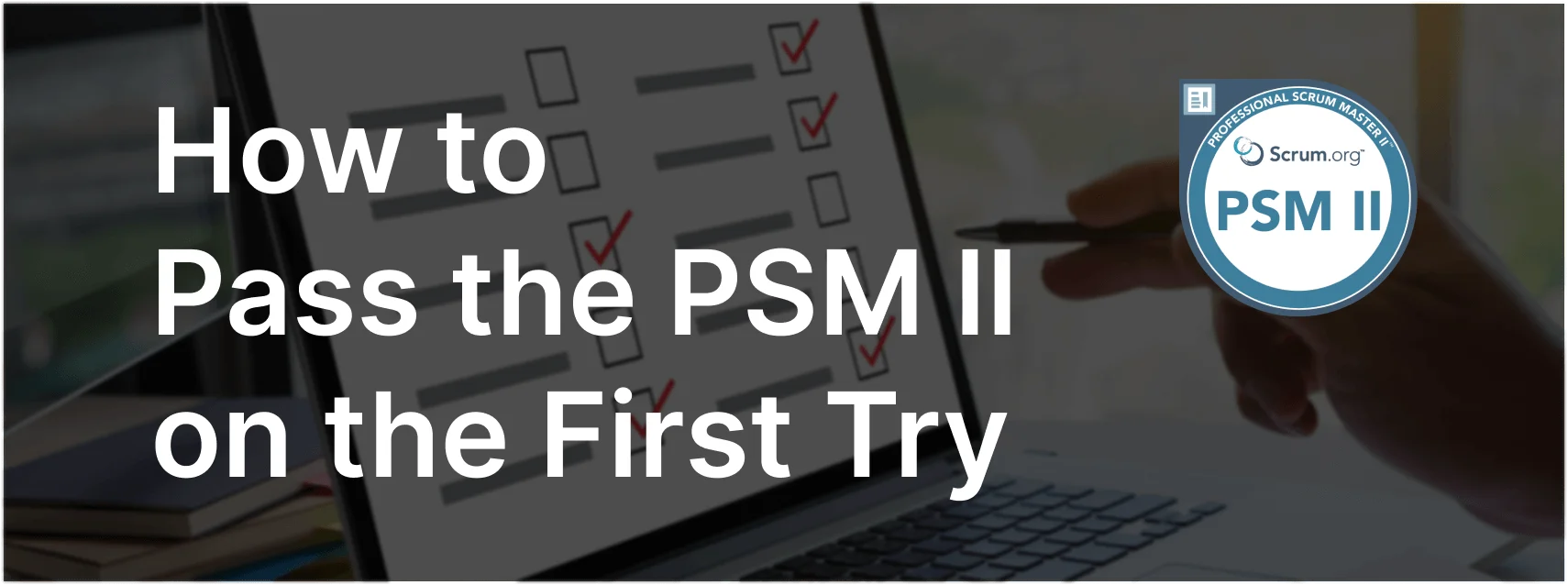Ensuring a Well-Understood and Actionable Product Backlog for Sprint Planning
Creating a forecast for a Sprint tends to run more smoothly when the Product Backlog items that are discussed are well understood and actionable. This article explores a specific exam question about the best approach to ensure a well-prepared Product Backlog, providing detailed explanations and insights relevant to the PSM II exam.
Exam Question
Creating a forecast for a Sprint tends to run more smoothly when the Product Backlog items that are discussed are well understood and actionable. Which approach would you recommend to ensure this state of Product Backlog at Sprint Planning? (choose the best answer)
- A. A separate Scrum Team of business analysts and functional testers analyze high-ordered requirements one Sprint ahead of development.
- B. The Product Owner work with the stakeholders to prepare Product Backlog items outside of the Sprint so the Developers will not be disrupted.
- C. The analysts on the Scrum Team document high-ordered Product Backlog items during a Sprint when they are not busy working on the forecast.
- D. The Scrum Team uses some time in each Sprint to analyze, estimate and design high-ordered Product Backlog items.
Correct Answer
D. The Scrum Team uses some time in each Sprint to analyze, estimate and design high-ordered Product Backlog items.
Explanation
Correct Answer
D. The Scrum Team uses some time in each Sprint to analyze, estimate and design high-ordered Product Backlog items: This approach, known as Product Backlog refinement, is integral to the Scrum process. It involves the entire Scrum Team spending time during each Sprint to ensure that the Product Backlog items are well understood, estimated, and designed. This continuous refinement helps keep the Product Backlog in a ready state, facilitating smoother Sprint Planning sessions and enabling the team to create accurate forecasts.
Incorrect Answers
A. A separate Scrum Team of business analysts and functional testers analyze high-ordered requirements one Sprint ahead of development: This approach is not in line with Scrum principles. Scrum emphasizes cross-functional teams and continuous collaboration. Creating a separate team for analysis can create silos and reduce the effectiveness of the Scrum Team.
B. The Product Owner work with the stakeholders to prepare Product Backlog items outside of the Sprint so the Developers will not be disrupted: While the Product Owner should work with stakeholders, isolating this work entirely from the Developers can lead to misalignment and lack of shared understanding. Developers need to be involved in refinement to ensure they understand the requirements and can provide input on feasibility and effort.
C. The analysts on the Scrum Team document high-ordered Product Backlog items during a Sprint when they are not busy working on the forecast: This approach is less effective because it treats refinement as a secondary task rather than an integral part of the Sprint. Continuous refinement ensures that the backlog is always ready and actionable, which is more effective than sporadic documentation efforts.
Responsibilities in Scrum
- Product Owner: Responsible for maximizing the value of the product and managing the Product Backlog. They ensure that backlog items are well-prepared, prioritized, and understood by the team.
- Scrum Master: Facilitates Scrum events, ensures adherence to Scrum practices, and supports the Product Owner and Developers in maintaining a healthy Product Backlog.
- Developers: Collaborate to refine the Product Backlog items, ensuring they are well understood and actionable. This collaboration ensures the team is aligned and can make accurate forecasts during Sprint Planning.
Relevance to the PSM II Exam
Understanding the importance of continuous Product Backlog refinement is crucial for the PSM II exam. It demonstrates advanced knowledge of Scrum practices and the ability to maintain a well-prepared backlog, which is essential for effective Sprint Planning and successful product delivery. Mastering this concept ensures that Scrum Masters can guide their teams in maintaining an actionable Product Backlog and improving overall productivity.
Key Takeaways
- Continuous Product Backlog refinement is essential for creating a well-understood and actionable backlog.
- Involving the entire Scrum Team in refinement ensures shared understanding and alignment.
- Effective Product Backlog refinement facilitates smoother Sprint Planning and more accurate forecasts.
Conclusion
Maintaining a well-understood and actionable Product Backlog is crucial for effective Sprint Planning and successful product delivery. By involving the entire Scrum Team in continuous refinement, organizations can ensure that their backlog items are always ready for development, leading to smoother planning sessions and more accurate forecasts. Understanding these principles is essential for effective Scrum implementation and success in the PSM II exam. For comprehensive preparation and practice exams, check out PSM II Exam Prep to enhance your understanding and application of Scrum principles.


